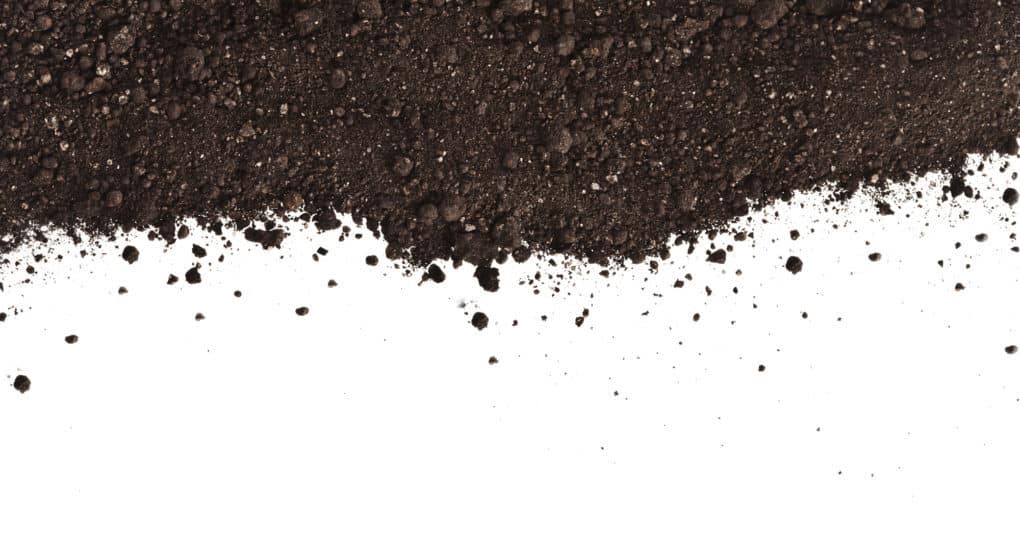
Compost (noun) - Decayed organic material such as leaves, grass clippings, and vegetables used as a plant fertilizer.
Compost (verb) - Make vegetable matter or manure into compost.
In a nutshell, compost is an earthy material produced by the natural breakdown of organic matter. Composting, then, is simply the tossing together of those organic materials whose decomposition creates a nutrient-packed soil.
*Don’t confuse compost with mulch. While similar, there are differences. Both are generally organic but you work compost into the soil to improve it nutritionally. With mulch, you spread it atop the compost or dirt after planting to serve as a covering to control weeds, promote water conservation, and to protect the plants’ roots from acute fluctuations of temperature.
Making your own organic compost could not be easier. If you can toss a banana peel you can make compost. You can use a man-made tumbler bin, or even a small area in your yard will work quite nicely. One is contained composting while the other is open-air.
Organic Daily Post has put together this easy to follow tutorial showing you everything you need to know about making your own nutrient-packed compost. This all-natural method will produce a grow medium in which your plants will not only grow but flourish! This is ecologically friendly and great for the garden, so what could be better?
Composting: Good for the Planet, Good for the Plants
Not only is making your own compost easy, aside from a meager initial investment, it costs you nothing to maintain. There is no damage caused to the environment and homemade compost is great for all your plants. Plus, breaking a little sweat and getting some outdoor activity is good for you, too.
Trucks haul away all that food we toss into the trash every day and then dump it into a landfill. Once there they move and manage it, which requires more gas-powered machinery and manpower. Much of it burns, further contributing to the polluting of our little planet.
By composting, you not only eliminate your contribution to pollution and landfills but also harness the magic of Nature to create a superior medium in which to grow your favorite plants, herbs, flowers, or vegetables. It’s kind of funny because once you start composting you actually get into it. It is a satisfying endeavor in unexpected ways.
Organic or Inorganic Compost?
The difference between organic and inorganic compost is pretty simple. Carbon-based materials that were once living organisms such as vegetables, grasses, leaves, and plant matter comprise organic compost. Organic soil is very rich in minerals and nutrients.
Non-organic soil media naturally contains no organic matter or nutrients. These consist of such products as perlite, vermiculite, and rockwool. If you want it organic, incorporate once living materials into your composting. For non-organic compost, you can add newspaper and other materials that will decompose over time.
Simply Complex
As simple as making your own compost is, there is a complex system at work. All those organic materials are breaking down to create a soil that is rich in nitrogen, potassium, and phosphorus; all things your plants love. You can use compost to amend or enhance the nutrients in your own garden's soil; it makes an excellent all-natural fertilizer.
What’s Happening Inside That Compost Pile?
Most of what goes on within a compost pile is undetectable to the naked eye. In an open-air pile a variety of insects, worms, and snails - as well as fungi - take up residence and contribute to its breakdown. Those are easy to spot. What you can't see, because it is on a microscopic level, is what is going on inside that heap of decaying matter. Hidden from view resides a bustling community of microbes (organisms too small to see) and bacteria that promote decaying of the material aerobically (using oxygen).
However, it is the bacteria that are the grunt workers of the compost pile. They promote the quick decomposition of the material releasing carbon dioxide, which in turn creates the heat necessary for the transubstantiation to occur.
Let’s Make Some Compost!
To begin, you’re going to need some organic material. The list of what you can use to create your compost is long, varied, and practically endless. There are also some items one should avoid adding to the collective and I'll get to those.
First though, throw your organic materials into a pile.
Below is merely a short list to give you a reference point. Think biodegradable.
- Eggshells
- Coffee grounds
- Banana peels
- Fruits like apples, melon rinds, orange peels, and grapes
- Vegetables such as beans, cabbage, potatoes, celery, and lettuce
- You can throw almost anything organic (that will degrade) onto the heap and Nature will do the rest.
- Leaves, grass, and almost all organic matter.
- ***Even newspaper (considered brown composting material) but you must balance it with extra amounts of green compost material
Avoid tossing in any bones, meat, or grease and animal by-products as well as any dairy-based material. Meat and bones don’t break down well and meat can also contain anabolic steroids and growth hormones. As for dairy products, if you have to work the pile with a rake or hoe, you don’t want any waves of soured milk breaking in your face while doing so.
While Nature does the chemistry, there are a few steps required by you to make it all work.
If you already have a designated area for your compost pile then you’re ready to start. The same applies if you have a tumbler or bin, but let’s begin with the open-air pile.
The Open-Air Pile
With open-air composting, you are essentially replicating what takes place naturally on the forest floor. Dried leaves, grasses, nuts, seeds, and twigs begin to decompose, creating a nutrient-packed soil from which new plant life begins to grow. The same forces of decomposition are at work with the organic matter you throw onto your compost pile.
Don't start out with too large a compost bed site unless you need a bunch of it. Three feet by three feet is respectable, considering you have to work it manually. Any larger and it can become a bit labor intensive. Ultimately, it's your call. Keep in mind, however, smaller piles create compost at a faster rate, resulting in shorter periods between batches.
Just Add Water
Throw your organic materials into a pile. With a garden hose, thoroughly wet the pile. You want it wet, but not soaking wet. It needs to be fairly moist for proper decomposition. After wetting down the pile you’ll want to aerate it by turning it with a pitchfork, rake, or hoe or by using a compost aerator. Stirring up the matter introduces oxygen and serves to heat the pile. Water and air are necessary components for good composting. Brown materials such as leaves and dried grasses produce carbon, while green organic materials produce nitrogen. Both combine to produce heat.
For best and fastest results you will need to keep your compost pile mildly moist. If your pile is in a shaded area you will water less often as the materials are out of the sun and drying is slowed. When you expose a pile to the sun's rays it will naturally dry out faster.
Regardless of your area size, you need to help accelerate the natural process. Turning the pile on occasion helps facilitate the decomposition process by introducing air, water, and heat. By fluffing it up with a rake or hoe, you expose all areas of matter to sunlight and also prevent your pile from sinking into a solid heap, which takes much longer to break down. Be sure to bring the dried edges into the moist center of the pile as you stir it up.
Troubleshooting
If your compost pile begins to stink you may have too much green material in it. Green material produces nitrogen and too much can cause an unpleasant odor. This is an easy fix. Simply introduce more brown material and toss it well. In no time you can eliminate that effluvium emanating from the pile. Once fluffed, the organic material will balance out as heat, sunlight, and air permeates the more exposed surface area.
Always turn or fluff your pile after any additions of material or after wetting it down. This is very important.
The Tumbler Method
Personally, I have always used the open pile method. That has changed, however, as this summer I have incorporated the tumbler method of composting and I like it. With a tumbler you can have remarkably rich soil for all your gardening needs in half the time of a conventional pile and with less toil. It is a comparison of weeks versus months and easy versus more difficult.
The tumbler is an easy and convenient way to produce excellent compost. Essentially, a tumbler is a closed drum suspended in a frame that you can turn or tumble by cranking the handle. It has a door for introducing new material.
Tumblers are perfect for older folks and people that aren’t able or don't want to shovel and dig on a regular basis. Tumblers are also simple to use, efficient, and can produce earth-friendly compost much faster than a traditional open-air pile. There are also compost accelerators you can introduce to hasten the process.
With a tumbler, the same methods of making compost apply. Add and wet your materials, then with the handy handle give them a spin. You can tumble your compost anytime without the need of rakes, pitchforks, or hoes; virtually eliminating bending, raking, and complaining.
In addition to the compost itself, making your own holds many advantages:
- Earth-friendly as it reduces landfill matter.
- Eliminates burning at landfills and the fossil-fueled equipment needed to manage the rubbish.
- Lessens your environmental impact by not purchasing compost wrapped in air and land- polluting plastic, then shipped by truck and rail requiring the use of fossil fuels for transport.
- Naturally, organic compost is as good as any store-bought and costs you nothing.
- Plants thrive in an organic soil free from chemicals.
- Pride of accomplishment.
They’re not making any more dirt but you can easily make your own organic soil. Through composting, you can create a nutrient-rich bed for all your plants (indoor & out), including fruits and vegetables in addition to limitless flowers. Having a hand in making the world a cleaner and better place doesn't hurt, either. Plus, it’s dirt cheap to do.
A world of additional information is available online about tumblers, bins, and open piles, along with the tools available to make home composting fun and easy!
Composting… finally, a breakdown that feels good!
